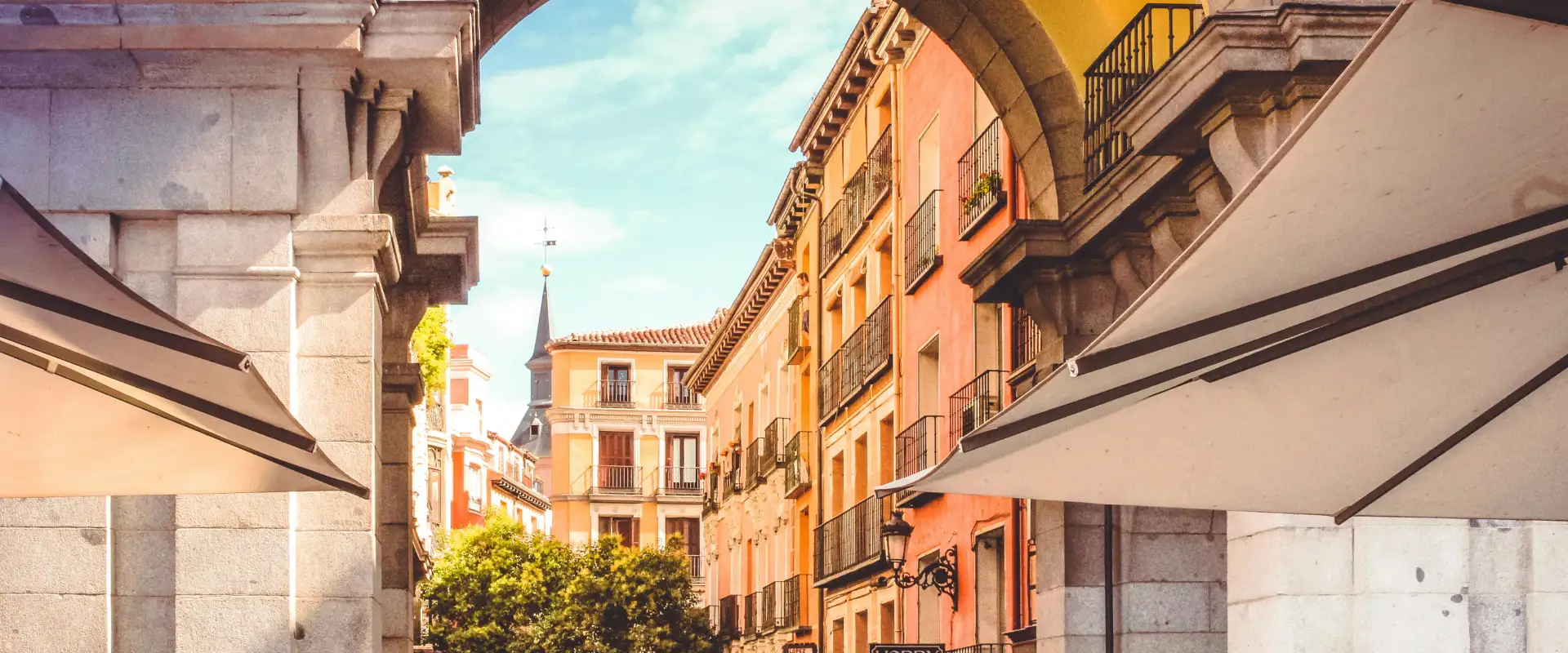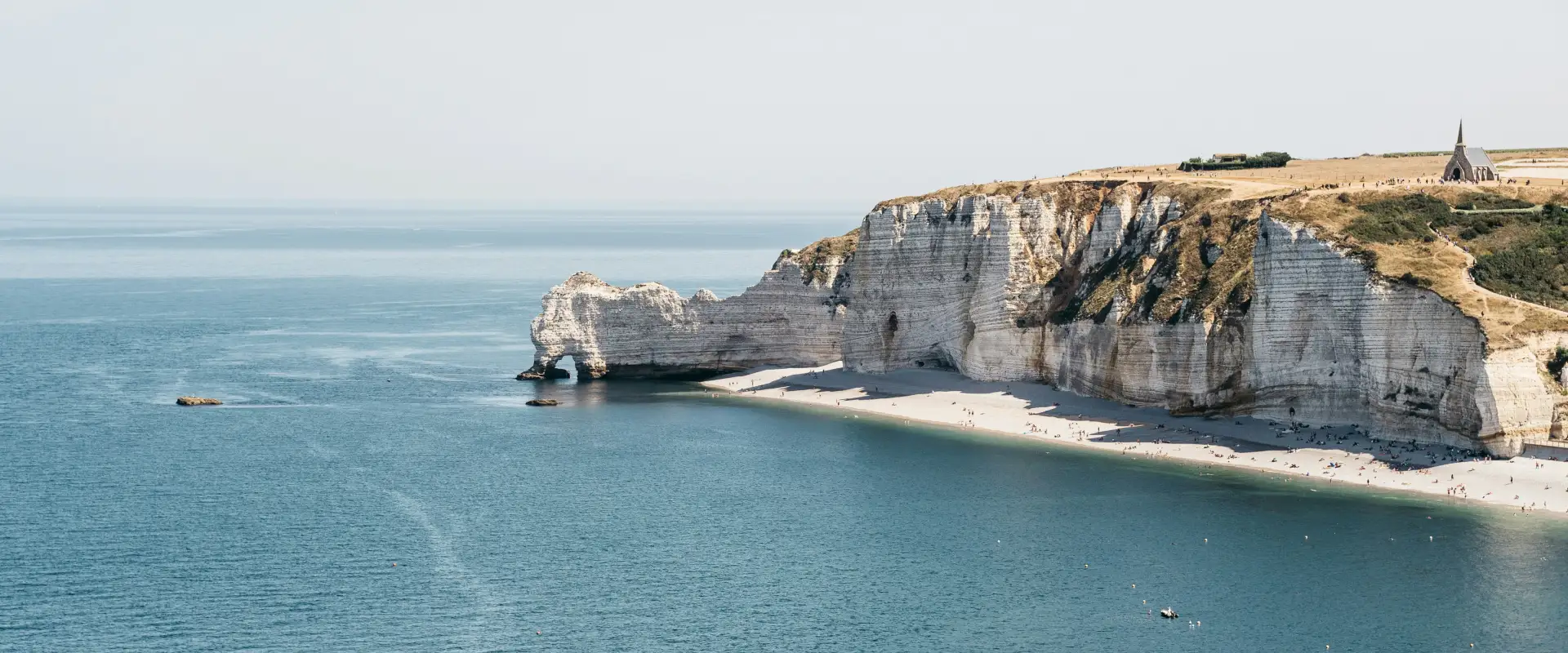
28 Things To Do in Lisbon
Table of Contents
Lisbon is not a city to rush around. On the contrary, the Portuguese capital invites visitors to slow down and go with the flow. You can get lost in the nooks and crannies of historic Alfama, hitch a ride on an old-style tram, or linger at the city’s viewpoints and rooftops, patiently waiting for that magical sunset. Whether you’re spending a day in town or a whole week, there’s plenty with which to fill your itinerary.

See the azulejos

From residential buildings to churches and underground stations, azulejos—or tiles, which translate to “small polished stones”—are everywhere in Lisbon. The National Tile Museum in Xabregas is the best place to learn the history of the craft, but there’s nothing like hitting the streets to see the city’s open-air collection. There are religious scenes, Moorish-inspired geometric patterns, and multicolored floral motifs, though the classic style is the blue and white combo.
One impressive design is located in Largo Rafael Bordalo Pinheiro in Chiado, where orangish tiles showcase mythological figures related to the elements, like earth and water. Another is in Largo do Intendente around the Arroios district, featuring big jars with flowers and Asian figures, representing Portugal’s former ties with the East. For a more modern interpretation, check out André Saraiva’s colorful mural in Campo de Santa Clara, which uses over 50,000 tiles to depict Lisbon’s iconic monuments, like the 25 de Abril Bridge and Santa Justa Lift.
Looking to buy a tile as a souvenir? Family-run Cortiço & Netos in Arroios is the place to go; tiles start at €8 a piece. The business was founded by the late Joaquim José Cortiço who collected discontinued ceramic tiles from Portuguese factories, some of which have since closed. Now run by his grandkids, the shop offers tiles from the '60s onward. (Note that some places—like stalls at the flea market—do not source their tiles ethically, pulling them straight from building facades, so always ask where they come from.)
Get lost in Alfama and Mouraria

In the hills bordering central Lisbon are the adjacent districts of Alfama and Mouraria, the oldest parts of the city. Alfama was one of the few places to survive Lisbon’s 1755 earthquake, while Mouraria was a Moorish area in the 12th century. Exploring these historic neighborhoods is like venturing into a maze. The narrow cobbled streets lead you to hidden courtyards, ginjinha stands with locals selling the sour cherry liqueur directly from their windows, as well as more official bars like Os Amigos da Severa. And don’t miss the viewpoints, like Miradouro de Santa Luzia and Miradouro das Portas do Sol overlooking the Tagus River.
A steep walk (or tram ride) uphill takes you to St. George’s Castle, one of the city’s highest points. The 10th-century castle, built during the city's Islamic occupation, was taken over in 1147 following the Christian reconquest. Since then, the building has undergone several restorations, including one in the 20th century that gave it its current look. Inside the complex is a museum, archeological center, and gardens where peacocks roam. Don’t miss the Tower of Ulysses, which houses a camera obscura offering 360º views of the city. A general entrance ticket costs €15, but there are discounts for families and students. While you’re in the area, visit the neoclassical Igreja de Santa Cruz do Castelo, whose bell tower also offers privileged city views.
Sample pastel de nata and other local pastries

Pastel de nata is Lisbon’s ubiquitous pastry. Fitting in the palm of your hand, the round flaky tart holds a creamy custard filling and is often dusted with powdered sugar or cinnamon. They’re all over the counters of pastelarias (pastry shops), but Antiga Confeitaria de Belém, which holds the original recipe, has the best. Manteigaria is also a contender, with its extra-buttery pastry. For a vegan version, check out Vegan Nata.
Beyond pastel de nata, Lisbon has plenty more pastries to offer. Open since 1829, Confeitaria Nacional in Rossio is one of the oldest pastry shops in the city. It’s known for delicious Christmas sweets sold year-round, like sonhos, which are small doughnut-like balls sprinkled with sugar and cinnamon that literally translate to “dreams.” North of the city in Saldanha is Pastelaria Versailles, a café-restaurant with an Art Nouveau interior and a big glass counter filled with sweets and salgados (savory snacks), like croquettes and codfish cakes.
Listen to fado

The Portuguese are a nostalgic bunch, and nothing says so more than fado. This traditional music genre is renowned for its melancholic lyrics, often evoking the feeling of saudade—a state of longing for something or someone. To best experience fado, watch a live performance. The venues tend to be small bars with minimal lighting so you can focus on the singer (often dressed in black clothes to match the moody tones) and accompanying guitarists, who slowly strum the guitarra portuguesa (a 12-string pear-shaped acoustic guitar).
In Bairro Alto, there’s Tasca do Chico, a small bar hosting free fado evenings (you only pay for what you eat), which has welcomed big names in fado over the years, like Carminho and Mariza. In Alfama, there’s Mesa de Frades, a restaurant in an old chapel that offers fado with dinner (set menu for €65) surrounded by 18th-century azulejos. Alternatively, book an experience like Real Fado, which takes place in some of the city’s coolest venues around Príncipe Real, including the Neo-Arab Embaixada palace and an 18th-century water reservoir.
Check out the street art

Street art is splashed all over Lisbon’s neighborhoods. Places like Alfama and Mouraria are filled with fado-themed pieces honoring Portuguese singers like Amália Rodrigues (aka the Queen of Fado, who was responsible for spreading fado worldwide) and Maria Severa (Lisbon's first fado singer). Meanwhile, the Graça neighborhood, located on the hill just above Alfama, has works by renowned Portuguese artist Alexandre Farto (who goes by Vhils) and American artist Shepard Fairey (who is behind the brand Obey). Other areas worth checking out include Alcântara and Marvila, where murals take over residential buildings; old industrial sites like LX Factory; and a basketball court in honor of the Chicago Bulls.
The Galeria Arte Urbana has mapped out the city’s most iconic artworks on its website, including notable murals, like the AkaCorleone colorful depiction of Portuguese poet Fernando Pessoa in Graça and the Poseidon by Spanish duo PichiAvo near the Santa Apolónia train station. You can also find animal sculptures made from recycled trash, like the giant bee in LX Factory or the lynx in Oriente. Download the Street Art Cities app, which offers maps of murals across the world. To learn the history of each piece, join a Lisbon Street Art Tour, which explores neighborhoods across the city. Some tours also host hands-on spray painting workshops; it’s best to book these tours in advance.
Explore Belém’s UNESCO monuments

As far as UNESCO World Heritage sites go, Belém’s got its fair share. Located on the west side of the city, the district is home to two listed monuments: the Jerónimos Monastery and Belém Tower. Both were founded in the 16th century and are prime examples of the Manueline period, a Portuguese late-Gothic style heavily influenced by the country’s maritime explorations. The monastery was created for the Hieronymus monks, who stayed there until the late 19th century. (It’s believed that these monks developed the recipe for pastel de nata.) Meanwhile, Belém Tower has served multiple purposes over the centuries, from a military fortress to a political prison. Both are open to visitors.
While in the neighborhood, enjoy the Museum of Art, Architecture and Technology—or MAAT—a contemporary art museum with a striking wavy-like structure designed by British architect Amanda Levete.
Watch the sunset from a viewpoint or rooftop

Somewhat of a ritual in Lisbon, you should build at least one sunset view into your itinerary. Some locals like to pick up drinks from a corner shop before settling down at a viewpoint (yes, you can drink outside). Others hit the city’s rooftop bars for a proper cocktail toast.
Overlooking the Tagus River, the Miradouro de Santa Catarina in Bairro Alto and Miradouro da Senhora do Monte in Graça are some of the best viewpoints in town (which also means they’re often crowded). If you’re looking for something quieter, head to Miradouro do Monte Agudo around Arroios. For a rooftop, try PARK (set above a car park in Bairro Alto overlooking the Tagus River), Topo (hidden inside an old shopping center facing St. George’s Castle), or Javá (right next to Time Out Market in Cais do Sodré and offering a 360º view of central Lisbon).
Go bar-hopping in Bairro Alto
If you’re in the mood for a party, head straight to Bairro Alto. During the day, the neighborhood is quiet, with people wandering the labyrinthine alleyways. But don’t let it fool you: There are bars around every corner. As soon as the sun goes down, a young crowd piles in, and the streets get rowdy, especially over the weekend, as bars stay open until 3am.
Most bars in the area are tiny, fitting four people or so. Some have no seats, so people spill into the streets instead with their imperial (small beer) or cheap, oversized caipirinhas. A typical crawl will take you to Maria Caxuxa (a spacious bar set inside an old bakery playing a mix of old and new hits), Loucos e Sonhadores (with its kitsch decor and free salted popcorn), and Zé dos Bois (which hosts events like concerts, drag shows, and outdoor movie sessions).
Hop on a tram or funicular

(First things first: Trams carry you around the city, while funiculars drive from point A to point B, generally up and down hills.)
The sound of a rattling tram is one of Lisbon’s most iconic features. Those bright yellow electric vehicles have been around since 1901, with only five routes still active today. They're ingrained in everyday life with locals using them to skip the hills, though lately they've become more of a tourist attraction. The 28 tram is the most famous—and thus the most touristy—since it connects historic eastside Mouraria with affluent westside Estrela, passing through some of the city’s picturesque viewpoints (Miradouro de Santa Luzia), squares (Praça do Martim Moniz), and monuments (Lisbon Cathedral and Estrela Basilica). To avoid the crowds, try an alternate route. The 12 tram runs from Martim Moniz in Mouraria to Praça Luís de Camões in Bairro Alto, while the 24 tram runs from Bairro Alto to Campolide on the northern outskirts of the city.
There are also classic funiculars that whisk you up the hills, like the Lavra Funicular, which links downtown’s Rua das Portas de Santo Antão to Torel Garden on the westside. It’s one of the few funiculars still used by locals. Others, like the Bica Funicular near Bairro Alto, are more popular among tourists since they cover a shorter distance on a single street. Funiculars also make for a great photo op, as they tend to sit still for a while (unlike the moving trams).
Tour the food markets

Food markets are among the best places to sample Lisbon’s diverse culinary scene, which reflects its multicultural community. Over the past decade, many of those traditional establishments have been revamped and turned into lively gourmet food halls with stalls selling a mix of snacks, drinks, and full-on meals.
The Mercado da Ribeira—also known as Time Out Market—in the riverfront neighborhood of Cais do Sodré has food stalls with menus curated by local chefs, such as Michelin-awarded-chef Henrique Sá Pessoa (serving modern twists on traditional recipes like roasted cod) and Marlene Vieira (who shows her northern roots in dishes like the francesinha, a meat-packed sandwich originally from Porto). There are also lesser-known markets—farther from the city center—that receive fewer tourists, like Mercado de Arroios in Arroios (home to the city’s first Syrian restaurant run by refugees) and Mercado de Campo de Ourique, the first to be a part of the market revival movement in 2013 (one year before Time Out).
Walk along the riverfront

A favorite pastime among locals, taking a walk along the Tagus River gives you prime access to Lisbon’s most picturesque stretches. Among them is the path that begins near the monumental square of Terreiro do Paço at the Cais das Colunas 18th-century quay. The area gets pretty crowded, with skaters rolling beneath the arcades and buskers playing their tunes to tourists passing through. From here, wander all the way to Belém (about four miles west), nipping into kiosks selling coffee and cocktails and museums, like the Museu do Oriente (dedicated to Asian art) and the contemporary art museum (MAAT) along the way.
Early mornings are ideal for jogging or cycling (rent one through the GIRA app, Lisbon’s official bike network, with prices starting at €2). But if you’re here for the views, get to the Ribeira das Naus steps on the waterfront for sunset. For another perspective, hop on a 10-minute ferry from Cais do Sodré to Cacilhas, a small town across the river, and enjoy a plate of freshly grilled fish overlooking the capital at a local restaurant like Ponto Final.
Visit Lisbon’s holy spaces

Portugal has a strong Catholic background that came with the Reconquista, when the Christians expelled the Moors around the 10th century. That explains the multitude of churches in Lisbon. The 13th-century Sé de Lisboa in Alfama is the city’s oldest church. Also in Alfama, you’ll find the Monastery of São Vicente de Fora, founded in 1147 and later adorned with inlaid marble, azulejo panels, and paintings to cater to the taste of Portuguese kings. There’s also the 17th-century National Pantheon, which took more than 300 years to be completed, resulting in a mix of architectural styles like Mannerist and Baroque. Inside, find the tombs of notable Portuguese figures, such as fado singer Amália Rodrigues and footballer Eusébio.
In the center of town is Carmo Convent, another of the few places to survive the 1755 earthquake. With a magnitude around 8.5, the earthquake spurred fires and a tsunami that destroyed much of downtown and killed thousands of people—many of whom were attending All Saints mass at the time. Some of the convent walls survived, but the patio remains roofless to remind visitors of the devastating event. Another building that survived the earthquake was the 16th-century São Roque Church in Bairro Alto, among the first Jesuit churches in the world. For a Baroque masterpiece, visit Estrela Basilica, with its imposing white dome and a sumptuous interior featuring multicolored marble and a nativity scene designed by Portuguese sculptor Machado de Castro, which includes nearly 500 figures made of clay and cork.
Go bargain-hunting at Feira da Ladra

Haggling isn’t super common in Lisbon, but you’ll still find a fair share of bargains at Feira da Ladra. Dating back to the 13th century, the flea market moved around until 1903, when it finally settled at Campo de Santa Clara in the Alfama district, opposite the National Pantheon.
Every Tuesday and Saturday from 9am–6pm, about a hundred folks gather here, selling anything from vinyls to second-hand clothes and antiques. If you’re looking for a quirky souvenir, this is the place for it. Prices range from €1–€20.
Linger at a kiosk

Kiosks are a common sight in Lisbon: These tiny Art Nouveau huts are meeting points in the neighborhoods, buzzing with locals grabbing their morning bica (short espresso) or an afternoon snack, like a croquette or custard tart.
Most kiosks are along Lisbon’s central boulevard, Avenida da Liberdade, but others dot the city. Popular spots among the locals include Chiado’s Quiosque do Carmo, a lively spot facing the Carmo Convent where you’ll often hear buskers; Alfama’s Quiosque Clara Clara, with its privileged views of the National Pantheon and Tagus River; and Cais do Sodré’s Quiosque de São Paulo, which serves drinks like ginjinha paired with treats, such as fried squid sandwiches.
Join the summer festivities

Come June, the whole city gets together to celebrate Lisbon’s saints, of which Santo António is the most popular. Locals grill sardines on the streets, and pimba (a Portuguese folk-style music genre) blares from every corner. Thousands of people hit the streets, traveling from all over the country to join the festivities.
The main event is on the evening of June 12, when a colorful parade takes over Avenida da Liberdade. But throughout the month, each neighborhood throws a month-long party (known as arraial), with Alfama and Bica welcoming the biggest crowds.
Hit the city’s art museums

For a small city at about 38 square miles, Lisbon has a surprisingly large number of art museums. The National Ancient Art Museum in Santos houses some of the country’s most iconic artworks, like the Triptych of the Temptation of St. Anthony by Hieronymus Bosch and other pieces ranging from the Middle Ages to the 19th century. Nearby Museu do Oriente in Alcântara highlights Asian art, including maps, porcelain, theater masks, and painted screens.
Classics, such as Monet’s The Break-Up of the Ice and Rembrandt’s Portrait of an Old Man, are on display at the Calouste Gulbenkian Museum on the northern outskirts of town (a 10-minute metro ride or 45-minute walk from the city center). For contemporary art, visit the museum inside Belém’s Cultural Center, which is currently undergoing a change in ownership; it formerly hosted works by the likes of Picasso, Dalí, Duchamp, Miró, and Warhol.
Dine at a tasca

Tascas are traditional Portuguese restaurants known for their affordable meals (around €10 per person) and no-frills decor. Many have been in the same family for ages, dishing out Portuguese specialties, such as bacalhau assado (roasted cod) or cozido (meat stew).
In other words, if you want to sample local dishes, seek out your nearest tasca. There's one in pretty much every neighborhood, and you'll usually recognize them by the lively atmosphere, paper towel set, and menus announcing the prato do dia (dish of the day). Some only open for lunch, while others also offer dinner. Zé da Mouraria, with two locations around the Mouraria district, is famous for its generous portions; O Tachadas in Santos specializes in grilled beef, chicken, and lamb; and Das Flores in Chiado does some mean fried goods, like codfish fritters.
Enjoy a Michelin-star meal
If you’re looking for something a bit fancier, treat yourself to a Michelin-star meal at one of the city’s fine dining restaurants—there are plenty, and most are located around Chiado in downtown Lisbon.
Led by chef José Avillez, two Michelin-starred Belcanto ranks among the best restaurants in the world. The intimate restaurant with vaulted ceilings and dim lighting offers two tasting menus, as well as the option to order à la carte. The classic menu includes dishes like hake and coriander and suckling pig with orange peel purée. Next door is the one-Michelin-star Encanto, Avillez’s new vegetarian venture; opened in 2022, it became the first vegetarian restaurant in Portugal to gain such recognition. The 12-dish tasting menu features spelt sourdough bread with smoked butter and sage ashes and rice with black truffle and purslane. Also worth a visit are two-Michelin-starred Alma helmed by chef Henrique Sá Pessoa—which offers a five-course menu focused on fish and other seafood sourced from the Portuguese coast—and one-Michelin-starred 100 Maneiras (from chef Ljubomir Stanisic), with 11-to-17 course menus that reflect the chef’s Bosnian roots.
Hang around LX Factory

Creative studios, restaurants, and shops occupy LX Factory, a converted textile factory in the Alcântara district on the west side of the city. Spend the day browsing the shelves of Ler Devagar (one of Lisbon’s coolest bookshops with antique printing machines and sculptures like the flying bike hanging from the ceiling). Try the decadent chocolate cake from Landeau, and keep an eye out for colorful street art like Bordalo II’s giant bee sculpture made with recycled trash or the black and white mural portraits by Brazilian artist Derlon Almeida.
On Sundays from 10am–7pm, there’s a lively market in the back with a dozen stalls offering a mix of crafts and second-hand items, such as ceramics, art prints, clothing, and jewelry.
Find traditional souvenirs at A Vida Portuguesa
You could pick up a keychain, magnet, or shot glass from any tourist shop downtown, but if you're looking for a gift that's a little more authentic, head to A Vida Portuguesa, where everything has been made right in Portugal. From vintage-style posters to canned sardines (they’re caught and canned on the coast) and bathroom essentials like soaps wrapped in patterned paper reminiscent of azulejos—it’s all here. A Vida Portuguesa has several locations, but the Largo do Intendente location has the biggest selection.
Escape to the city’s parks and gardens

If you need to kick your feet up after an afternoon of maneuvering Lisbon’s hilly neighborhoods, retreat to one of the city’s parks or gardens. Spanning about 2.5 acres, Monsanto, located northwest of the city center, is Lisbon’s largest green space. In it, you’ll find a variety of sports courts (basketball, tennis, football), viewpoints like the Miradouro Keil do Amaral overlooking the 25 de Abril Bridge and Tagus River, and picnic areas.
Other local favorites include Gulbenkian Gardens, which surrounds the Calouste Gulbenkian Museum and is the perfect reading spot. Tapada das Necessidades in Alcântara is a wooded park with resident peacocks and a striking cactus garden. And Estufa Fria, a tropical greenhouse set inside the Parque Eduardo VII just a few miles north of the city center, feels like a mini forest with its large ferns, palm trees, and monsteras.
Unwind at the beach

The sun is out year-round in Lisbon. As soon as the heat strikes (temperatures can reach up to 86ºF in the summer), locals hit the beach for a refreshing swim. But even in the off-season, many people take to the coast to feel the sea breeze on a relaxing walk along the promenades. Close to Lisbon is a series of beaches that you can reach via train, bus, or ferry.
Head to Costa da Caparica (10 miles from Lisbon) or Carcavelos (13 miles) for a surf session—surf schools are available in both areas—or relax in the charming coastal towns of Cascais and Estoril, both about 16 miles from the capital. Between swims, take an ice cream break or order a bola de berlim—a doughnut with a sweet custard filling often sold by beach vendors. Being so close to the sea, you'll also have the best chance to taste fresh seafood straight from the source. For a fish rodizio overlooking the water, try Baía do Peixe in Cascais. If you want a round of seafood snacks like clams or octopus salad, head to Retiro do Pescador near Fonte da Telha beach in Costa da Caparica, or try rustic Taberna do Zé da Lídia near the Trafaria boat terminal, which offers dishes like fried cuttlefish and tuna steak.
Plan a day trip to Sintra

Sintra is one of the most popular day trips from Lisbon. This hilltop village wows visitors with its romantic setting, verdant surrounding mountains, and palaces quite clearly fit for royalty. A train from Lisbon’s Rossio station gets you there in about an hour.
Take your time touring the UNESCO site, making sure to cover the main attractions like Palácio Nacional da Pena, a 19th-century palace envisioned by King Ferdinand II (he was known as the king-artist for his love of fine arts). You can see his romantic taste in the bright yellow and red facade and the interior rooms covered in azulejos, frescoes, and ornate Neo-Mudéjar motifs. Wander through the surrounding park, home to the Chalet of the Countess of Edla, built for Swiss-born opera singer Elise Friederike Hensler, who became Ferdinand II’s lover after he lost his first wife, Queen Maria II. On a hill opposite the palace is the 10th-century Moorish Castle, with its stone battlements zigzagging through the Sintra mountains, making it the perfect spot to take in the views. Finally, there's Quinta da Regaleira, a mystical park filled with lush paths, hidden tunnels, and an initiation well said to have been used for Masonic rituals.
Take the kids to Parque das Nações

If you’re traveling with the family, head to Parque das Nações (Park of Nations) in east Lisbon. Much of the riverfront district was created for the Expo 98 World Fair, which attracted over 10 million people to the capital (for reference, that's the population of Portugal). The more-than-2,000-acre space, which was formerly industrial, was completely redesigned with futuristic buildings by renowned architects from around the world, such as Santiago Calatrava (Spain), Peter Chermayeff (UK), and Álvaro Siza Vieira (Portugal). The effort made it one of Europe's largest urban redevelopment projects at the time.
Locals head here for a river walk, to shop in the Vasco da Gama shopping center, or to work in the surrounding offices. But for families, the Oceanarium and Pavilion of Knowledge are the main draws. Starfish, sharks, and penguins are just a few of the species you’ll spot at the Oceanarium, one of Europe’s largest aquariums, housing more than 400 species. Meanwhile, the Pavilion of Knowledge offers fun interactive exhibits related to science, like a high-wire bicycle and a tornado generator, both of which are available for all ages.
Going picks for best things to do in Lisbon
Become a film guru
Whether you love documentaries or horror movies, indie flicks or LGBTQ+ features, Lisbon has a film festival for you. During these festivals, you’ll get to know the city’s independent cinemas and catch up on the latest releases.
Some of the top festivals in town include:
- Monstra (March): An animation film festival with special screenings and activities for families
- IndieLisboa (April/May): A festival dedicated to independent cinema, screening a mix of short and long films with a special section for music films (often paired with a party)
- MotelX (September): A week-long festival where horror films take center stage; also featuring outdoor movie sessions, workshops, and a quiz night
- Queer Lisboa (September): The only Portuguese film festival solely dedicated to LGBTQ+ films that takes place in Lisbon and Porto (October)
- Doclisboa (October): A documentary film festival held since 2002
Learn a new craft
Handmade crafts—such as embroidery, textiles, and ceramics—are essential to Portuguese culture. Many techniques were introduced by previous civilizations, like the Romans and the Moors, and have been passed down from generation to generation. Some have even gained UNESCO status (like Estremoz clay figures, representing the regional attire of Alentejo).
In recent years, the capital has gained a slew of creative spaces where artists share their craft. Many are based around Arroios, one of which is Fica—a studio offering workshops like woodworking and screen printing—and Retrosaria Pomar, which focuses mostly on embroidery and textile crafts. The city’s growing ceramics community has also opened its studio doors, with Cerâmica São Vicente in Alfama teaching you how to paint traditional azulejos. Although there are longer courses available, most offer single lessons if you're just passing through. Book your workshop in advance to guarantee a spot. The atmosphere is intimate, as the groups are small and you get hands-on attention from the artists themselves. You can always take the art home with you, and in some cases, the studio might help with shipping.
Go shopping at the Triangle
At the bottom of the hilltop neighborhoods of Bairro Alto and Estrela, there’s a small corner packed with cafés, ceramic studios, and specialty shops selling anything from Portuguese tea to coffee roasted in Lisbon. This creative hub—nicknamed the Triangle—is situated between three streets: Rua Poiais de São Bento, Rua do Poço dos Negros, and Rua de São Bento.
Head to Companhia Portugueza do Chá for custom tea blends, shop handmade items like ceramics and jewelry at Kintu Studio, or wander around Lisbon’s Green Street, a quirky stretch filled with potted plants adorning residents’ balconies and doorsteps.
Explore Marvila and Beato
The industrial neighborhoods of Marvila and Beato on the east side of town have had quite the makeover in recent years: Factories and abandoned warehouses have been given the royal treatment and turned into breweries, art galleries, and restaurants.
Sample craft beer at Dois Corvos—the first brewery to settle here in 2015 with a range of brews from light pilsners and hazy IPAs to imperial porters and stouts aged in Carcavelos wine barrels. There’s also Musa, famous for its music-pun labels like Red Zeppelin, Born in the IPA, and Eye of the Lager. Visit the latest contemporary art exhibit at Underdogs Gallery (co-founded by Portuguese street artist Alexandre Farto, aka Vhils), or taste local fare like Portuguese cheeses and smoked meats at the Praça stands—a kind-of food market set inside Hub Criativo do Beato, Lisbon’s growing innovation center. The area is industrial, once used by the Portuguese army as military maintenance to produce things like flour and cereal; however, the space has been converted into a startup hub for creative and tech companies looking to set up bases in the capital.
See Going's deals on flights to Lisbon, and join today to get cheap flights from all over the world delivered right to your inbox.
Plan your trip to Lisbon
Last updated August 28, 2024









